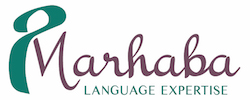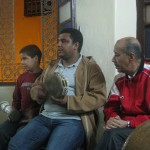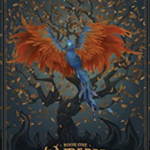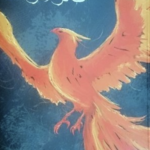A Personal Reflection on Books, Art & Life
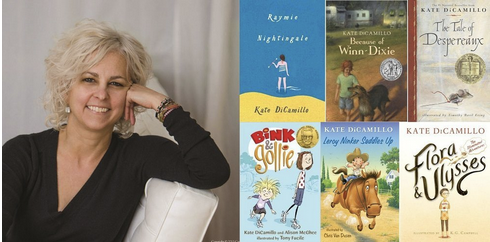
I just finished listening to a beautiful interview by Krista Tippett with Kate DiCamillo on the On Being Podcast. It was a poignant and honest exploration of the power of stories to increase our capacity for life and the fullness of experiencing wonder and joy amidst the suffering and seeming chaos of the world around us.
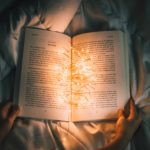
The stories most specifically discussed were Kate DiCamillo’s books, but as someone who is both bookish AND friends with people/cultures that don’t do reading for fun, I feel the need to expand the meaning of “story” here. Narratives with plots and memorable characters certainly do special work to “bring us home,” in the terms used in this interview–to comfort us and remind us of the complete safety and wholeness that we all have the potential to access, as human beings making sense of our existence. However, I want to expand “story” here to include all the arts that humans use to express meaning. In literature, we connect with one another through language, but if language is a system of symbols that we use to communicate, then meaningful arts can certainly include more than books. For example: music, calligraphy, painting, cooking, ritual, etc.
Life is Chaos. Art is pattern.
Kate DiCamillo, OnBeing interview
I want to include those who don’t always feel at home with reading for recreation: your heart is just as full and your light is just as bright. Even within this interview, there is a brief discussion of the art in books (I listened to the unedited version). DiCamillo comments that art, like stories, is a “shortcut to the heart.” Just as she, through her writing journey, is “walking home” and helping others do the same, so are all those artists who remind us of our shared humanity and our inner compass.

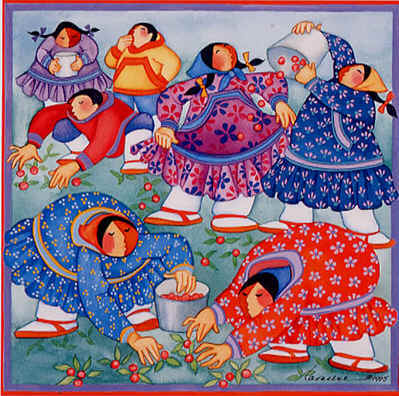
What and who does this work for you? For me, it’s artists (Ilan Hasson, Kawasi Hasui, Barbara Levallee, Jackie Morris…) and poets (Mary Oliver, Mahmoud Darwish, ZeinB from Saudi Arabia…), as well as writers of stories (Frances Hodgson Burnett, Louisa May Alcott, Robin McKinley…), who have been walking home with me throughout my life.
For many of the Moroccans I spoke with during my dissertation fieldwork, it’s Moroccan Malhun Poetry that does this work for them. For example, one woman’s favorite poem, Al-Tihan, calls her back to the renewal of relationships, a reminder of kin, friendships, and love for one another. Whether it is her own voice or another’s, the words of Mbarek Soussi are performing the same important work that Kate DiCamillo and others provide. For those of you want to see the words of this sung poem, fear not–I’m working on a whole anthology!
Who are the companions on your journey, whether in reading or elsewhere? Feel free to post any answers on social media or email me. For the record, when I began writing this post, I had never read any of DiCamillo’s work. After hearing the interview and seeing Ann Patchett’s glowing recommendation in the NY Times, I’m happy to report that my 5-year-old son and I are discovering the world of characters that DiCamillo provides. And in case you wonder if her books might be too young for you, consider Ann Patchett’s words: “Do not make the mistake I nearly made and fail to read them because you are under the misconception that they are not for you. They are for you.”
For those of you wondering where you can find magical stories like DiCamillo’s written in Arabic (and perhaps translated into English), I make lots of recommendations in this blog. For English reviews of children’s literature, see ArabKidLitNow, especially middle-grade novel طائر الرعد / Thunderbird by Sonia Nimr, with new English translation by Marcia Lynx Qualey (available from Amazon and other booksellers). For Arabic reviews of Arabic children’s literature, check out Hadi Badi.
In case anyone is concerned that I have been dismissive of reading and book culture in this post, rest assured that I am a strong supporter of them, especially public libraries. I just don’t want us to be blinded by our love of books from seeing the important literary and artistic work that has and is occurring in other formats. As Seth Godin said in his Akimbo podcast episode on libraries:
The passion of the librarian is to connect people to information…keeping the flame of knowledge alive, helping generation after generation connect to what they needed to know.
Seth Godin
Literacy is awesome, but sharing knowledge and information is not limited to books and reading. There is room in our shared human culture to appreciate literary and artistic accomplishments both in books and without. Our diversity of formats attests to our diversity of peoples and circumstances, as well as our shared creativity and resilience. To idolize or denigrate a particular format is counter-productive.
